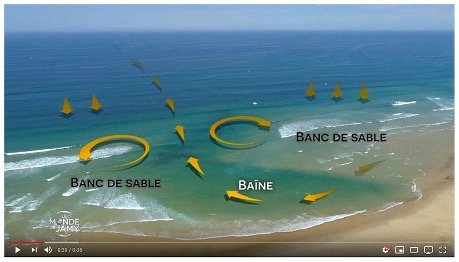November 2019 (ROTM#131) Anglet, France
If you've scanned through the Rip of the Month pages you'll quickly realise that rip currents are a global phenomenon, particularly on what we call 'surf' beaches, which generally have consistent wave action and various configurations of sand bars, which are ideal conditions for the formation of rip current channels. France is no exception with excellent surf beaches in the south-west Atlantic Landes and Gironde coasts stretching for over 200 kilometres. Rips are very common along this entire stretch of coastline and with up to 4 million visitors a year to the beaches, beach safety is clearly a big issue.
I'm working at the University of Bordeaux at the moment as part of my UNSW Sydney research sabbatical with Dr Bruno Castelle, one of the best rip current scientists around who is involved in various projects relating to beach safety along this coast.
This picture from Bruno is from Anglet, just north of the famous beach town of Biarritz. There are two rips in this picture. The obvious one in the foreground is a classic channelised rip that appears as a dark gap, about 10-20 m wide, flowing through the sand bar at low tide. There is also a boundary rip (that is also in a deeper channel) against the rocks and headlands that is narrower, but just as dangerous given the adjacent rocks. There are various terms used to describe rips in French, but the best one seems to be 'courant d'arrachement'.
For the francophones, here’s a good video in French although it uses slightly different terminology
This rip is like a river channel.


